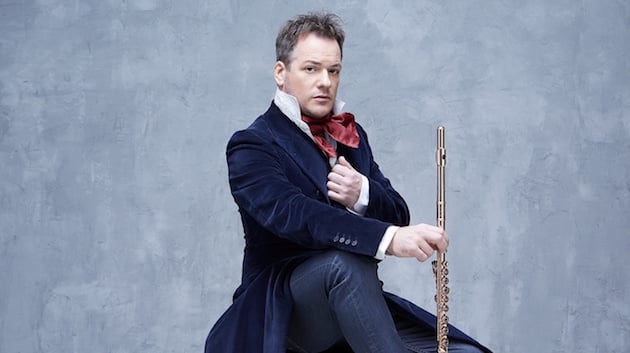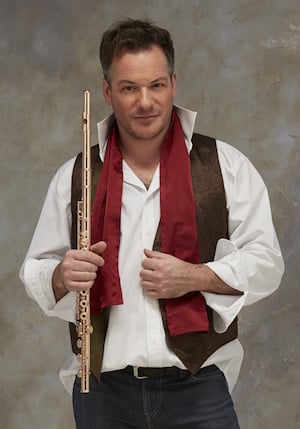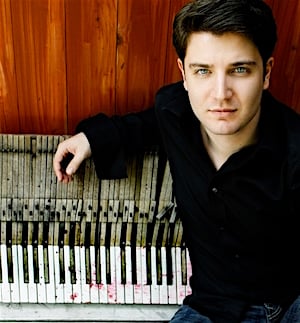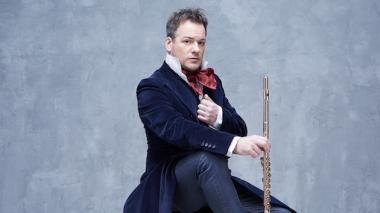
Emmanuel Pahud is as famous as flute players get. His celebrity follows in the model of James Galway and Jean Pierre-Rampal: the once-in-a-generation flutist turned recording artist. But where Galway and Rampal concertized, taught master classes, and made the occasional guest appearance on The Muppets, Pahud distinguishes his solo career by maintaining an orchestral post: principal flute for the Berlin Philharmonic, a position he has held since 1992. And in accordance with the times, his continued celebrity relies on the production of online videos and resources by organizations he is associated with.

For an audience of enthusiasts, this means that Pahud delivers, but is such a known quantity that he can only surprise you so much. I assume many of those in attendance at Wednesday night’s Herbst Theatre recital presented by San Francisco Performances had prior familiarity with the artist; I saw half a dozen flute cases during intermission, which is more than none.
Pahud sounded lovely and assured and exactly like himself on a recording. If a great musician possesses a unique sound unmistakably his own, Pahud’s flute tone is equal parts recognizable and perplexing. A blend of pleasant, calculated airiness and heavy-edged shows of strength, it is not so much one reliable sound as a distinctly amorphous approach. Some liken this range to a palette of colors, a mandated synesthesia I have never much cared for. (I would prefer we talk in thoughtful or measurable descriptors.) In the end, the sound was there, unsurprisingly consistent with his recorded playing.
Pahud opened the program with Francis Poulenc’s Sonata, a staple of the flute repertoire that he could play with his eyes closed — and he mostly did. The broadly melancholy work was treated to an onanistic rendering. Pahud played what he liked, how he wanted to, and it felt good. The second movement “Cantilena” was gorgeous and far too slow. The end of every movement, tapered with a deliciously spun vibrato, elicited murmurs of approval from the audience. As with the rest of the program, pianist Alessio Bax provided a clean foundation for his musical partner.

Franz Schubert’s “Arpeggione” Sonata was written for its now-defunct titular instrument and survives in standard transcriptions for the viola and cello, though there is a precedent for flute players taking up the work. The sonata is deliberately understated, mostly dwelling in a soft dynamic. (The arpeggione was a soft-spoken instrument, somewhere between a guitar and cello, and I have always wondered if the piece would be fundamentally more engaging with that bizarre mix of bowed and fretted strings.) Fortunately, soft playing is one of Pahud’s specialties — no one gets softer than he does — and his interpretation was enjoyable, if inevitably languorous.
After intermission, Pahud delivered J.S. Bach’s Sonata in E-flat Major, BWV 1031 with restraint, minimal ornamentation, and a timbre evocative of the Baroque flute. I like historically-informed performance on modern instruments as much as the next guy, but the absolute commitment to a subdued tone from both flute and piano seemed limiting and too much of the same thing, especially following the Schubert.
Without taking a break to leave the stage, Pahud and Bax launched into the final work on the program, a transcription of Mendelssohn’s Violin Sonata in F Major. The melodies in the piece itself are all right (there was a reason Mendelssohn let it go unpublished in his lifetime), but they did allow Pahud to flash substantial technique and a roughness of playing in welcome contrast to the rest of the program. Following a brief encore, those so inclined could wait patiently outside the Herbst Theatre doors, for autographs and photos, flute cases in hand.


